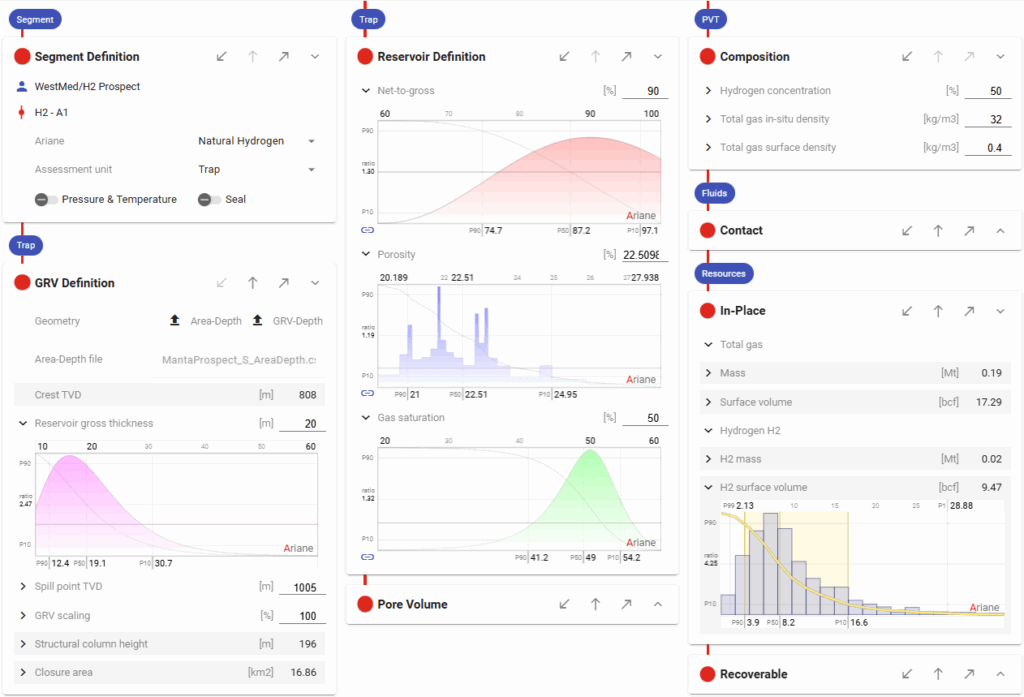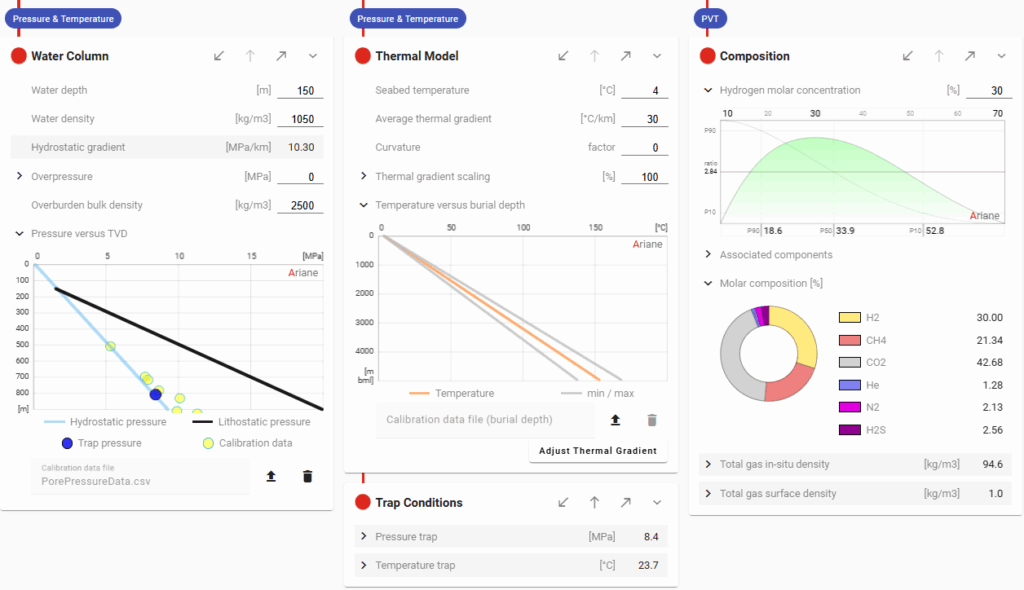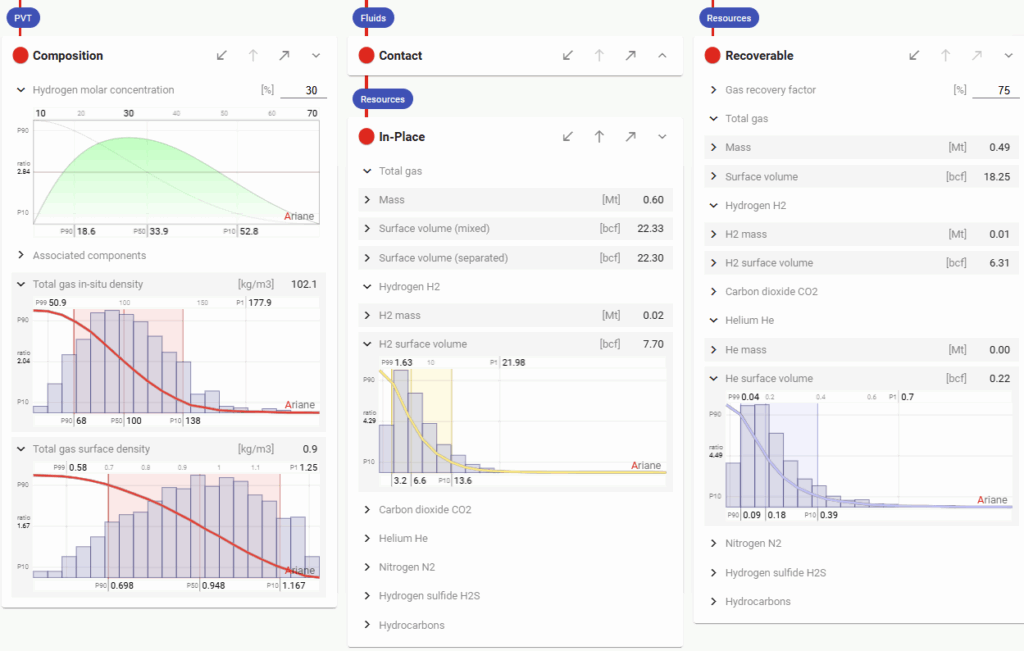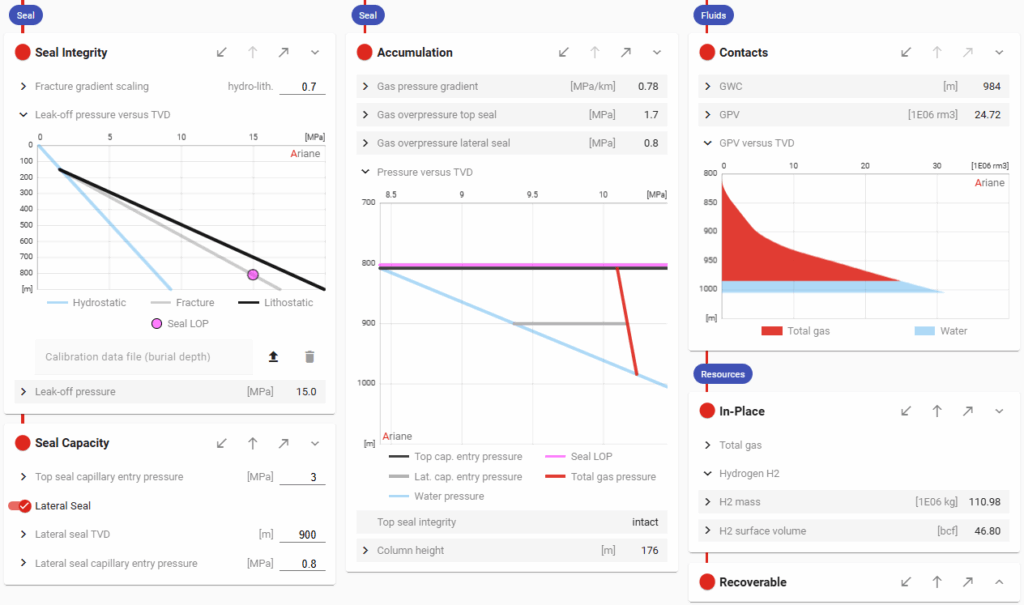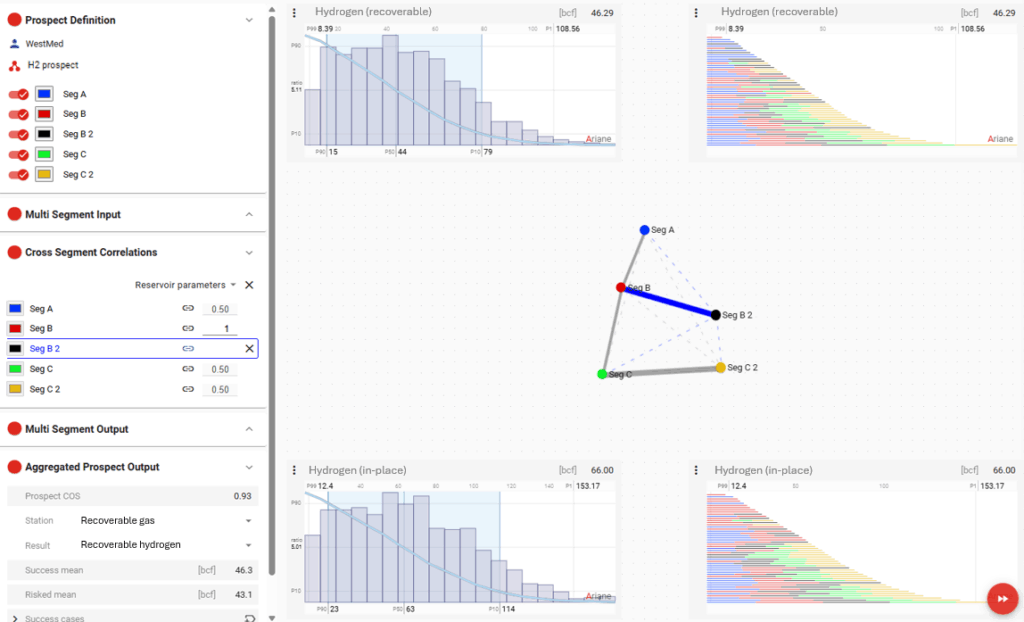Ariane for Natural Hydrogen
In the exploration for natural hydrogen, top-down analysis such as surface seep investigation and hydrogen occurrences meet bottom-up approaches investigating generative areas. H2 prospects are located in-between, targeting traps with reservoir and seals on the pathway from source to surface. The uncertainty of the geochemical composition in their PVT context has a strong impact on the H2 resources and their by-products (He, CH4, CO2, etc.). With Ariane Natural Hydrogen, the economic viability of H2 prospects and their secondary resources and liabilities can be easily assessed.
Ariane Highlights
Hydrogen prospect assessment made easy. Don’t solve tomorrow’s challenges with yesterday’s tools..
A quick check if it's worth going further
You need a very quick estimate of the resource ranges of an area of interest.
You provide your best estimates for gross rock volume and reservoir parameters, as well as their uncertainty distributions.
You specify an uncertainty range on hydrogen concentration and gas densities.
You run Monte Carlo and get uncertainty ranges for in-place and recoverable hydrogen.
Ariane provides you with a robust estimation, straight forward, easy to understand and communicate, transparent for QC.
Hydrogen rarely comes alone...
You have identified a trap including reservoir and seal, on a migration pathway.
You have gas measurements from surrounding wells: some contain methane, some carbon dioxide, etc. Some wells even have some helium!
You specify the pressure and temperature gradient with its uncertainty, the background gas composition and the range of expected hydrogen.
You run Monte Carlo to estimate not only hydrogen volumes, but also the associated gases.
With Ariane, you obtain results not only for hydrogen, but also other gases which will be co-produced – some are liabilities, some might bring additional value!
Is your accumulation limited by seal integrity, seal capacity or faults?
Your trap has plenty of pore volume and could hold a large amount of hydrogen – but you have some doubts about the seal…
You calibrate the fracture gradient with LOP data and specify top seal capillary entry pressure.
You test seal capacity end members to see the impact on hydrogen column height, and then specify uncertainty ranges.
You run a quick Monte Carlo simulation to see possible column heights and the likelihood that your trap is seal-limited.
Ariane integrates pore volume, PVT, pressures and seal to provide robust estimates of in-place and recoverable hydrogen volumes.
Standard Assessment
Standard assessments are simple calculations used for screening, with the goal of estimating the order of magnitude of risk and volume for a specified trap.
The calculation of the in-place and recoverable hydrogen in Ariane involves total pore volume, hydrogen concentration and gas densities, an imposed column height and a recovery factor.
Gas composition & PVT
The properties of the naturally occurring subsurface gas mixtures are strongly dependent on the hydrogen concentration, the other gases associated with the accumulation, and their pressure and temperature window.
Ariane calculates the total gas properties such as subsurface and surface densities, based on gas composition, regional pressure and thermal gradients – all uncertainty enabled!
Hydrogen mix & Associated gases
Finding hydrogen is great, but the commerciality is likely to be driven by its by-products – it is not the same to produce 20% hydrogen with 80% CO2 or 80 CH4.
In Ariane, calculate your hydrogen volumes together with its possible co-products CO2, CH4, H2S, He, etc – they might add or subtract value to the project.
Seal & Accumulation
The best combination of trap, reservoir and charge will not be worth anything if the top seal is broken or leaky, or if a fault limits the accumulation.
With Ariane, specify top seal integrity from fracture gradients, top seal capillary entry pressure and fault seal, fully integrated in the uncertainty assessment, to constrain the column height predictions.
Aggregation of Prospects
To estimate the risk and resources for a larger area, or a more complex trap involving multiple layers, reservoir segments are “rolled up”.
Individual Ariane assessment can be aggregated to larger prospects or portfolios, with a fully probabilistic co-simulation honouring risk and volume correlations between segments.
Selected Resources

